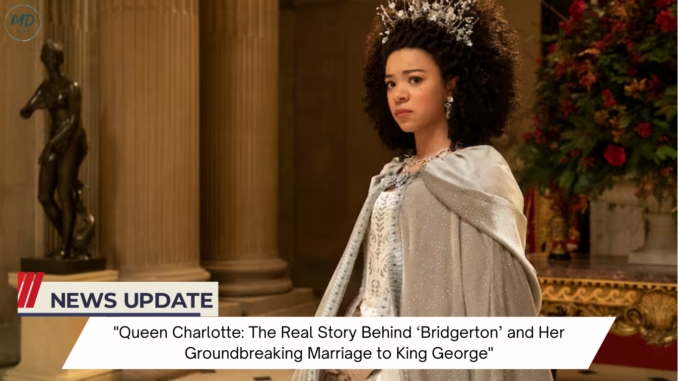
Subscribe Whether you watched it or not, Netflix’s “Queen Charlotte: A Bridgerton Story” has taken the world by storm. An extension of the “Bridgerton” universe, “Queen Charlotte” delves into the marriage of Queen Charlotte and King George and the expectations placed on the young queen.
The show has garnered more attention than other “Bridgerton” stories — especially since “Queen Charlotte: A Bridgerton Story” is based on a true historical story. But how accurate is “Queen Charlotte”? And what liberties did the creators take?
Here’s everything you need to know about Queen Charlotte, King George, and their incredible true story.
Who is Queen Charlotte from “Bridgerton” based on?
According to National Geographic, Queen Charlotte was just 17 years old when she married King George III and became queen of England and Ireland.
Charlotte was born in 1744 in the German principality of Mecklenburg-Strelitz, now northern Germany. According to National Geographic, Charlotte had an “unremarkable childhood” in a “mediocre and provincial principality.”
But all of this was seen as beneficial to the political advisers of George, who ascended the throne in 1760. Charlotte was relatively unknown and therefore likely had “no political connections or agenda,” according to National Geographic.
An emissary “proposed marriage on (George’s) behalf,” although the couple had never met, and Charlotte accepted. King George and Queen Charlotte were married in 1761, although “she spoke no English and had never met her husband before the wedding,” according to National Geographic.
Was Queen Charlotte black in real life, like in ‘Bridgerton’?
While the creators of “Bridgerton” are known for casting actors of color in stereotypically white roles, the casting of a black actress as Queen Charlotte is not a surprise. Rumors have swirled around Queen Charlotte’s ethnicity for years.
Queen Charlotte is a direct descendant of Margarita de Castro y Sousa, who, according to PBS, was “a black branch of the Portuguese royal family.” It’s this Portuguese lineage that has historians debating — was Queen Charlotte brown-skinned?
According to National Geographic, some historians point to Charlotte’s portrait, which they believe depicts the queen as having “African” features. They argue that Charlotte was light-skinned, but may have concealed her ethnicity to “conform to the Eurocentric beauty ideals of the time.”
But other scholars argue that Charlotte’s Portuguese ancestry is “so remote” that it likely didn’t affect her appearance. According to National Geographic, these historians “suggest that modern notions of race were the driving force behind the belief that Charlotte was black.”
Descriptions of Charlotte’s appearance at the time varied widely. According to Vox, “A Tale of Two Cities” describes Charlotte as “a plain-faced queen.” Charlotte’s doctor called her “small and curvaceous, with a truly mixed-race face.” According to one prime minister, “Her nose was too broad and her lips too thick.”
While the debate continues, according to National Geographic, we will probably never know whether Queen Charlotte was black. “Since it is impossible to determine what Charlotte actually looked like in real life, the debate will probably never be settled.”
Was Queen Charlotte a favorite of King George?
By all accounts, King George and Queen Charlotte had a very loving relationship. According to National Geographic, “the king and queen had an unusually happy marriage, and George III was a devoted father and husband.”
Speaking of Charlotte, King George said, “The queen was my physician, and no man could have a better friend; she was my friend, and no man could have a better friend.”
According to an article published in the London Review of Books, the king and queen slept in the same bed, which was unusual for the time, until King George’s madness drove them apart.
